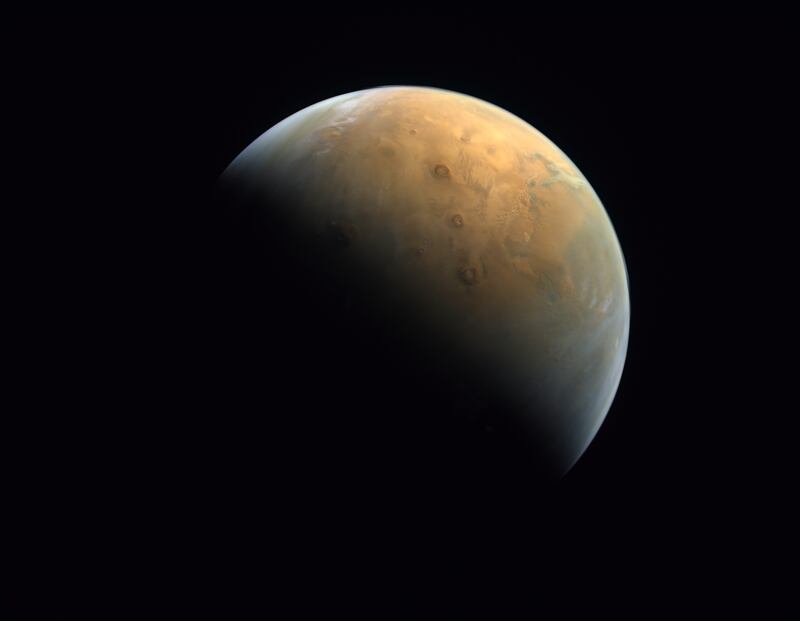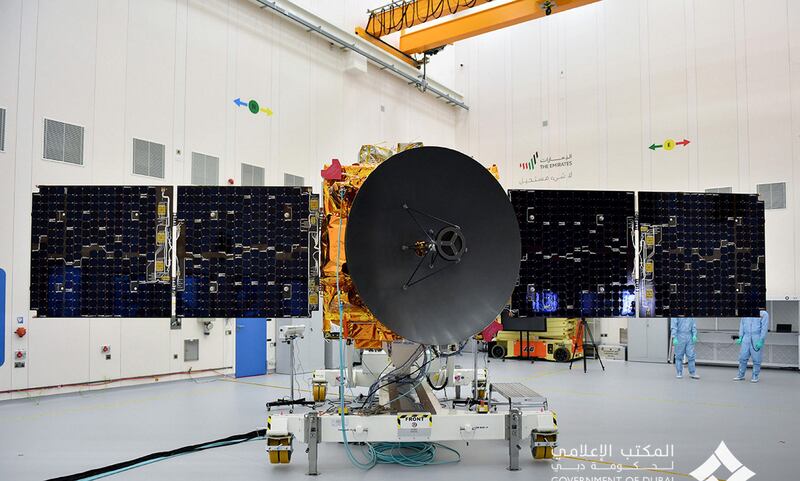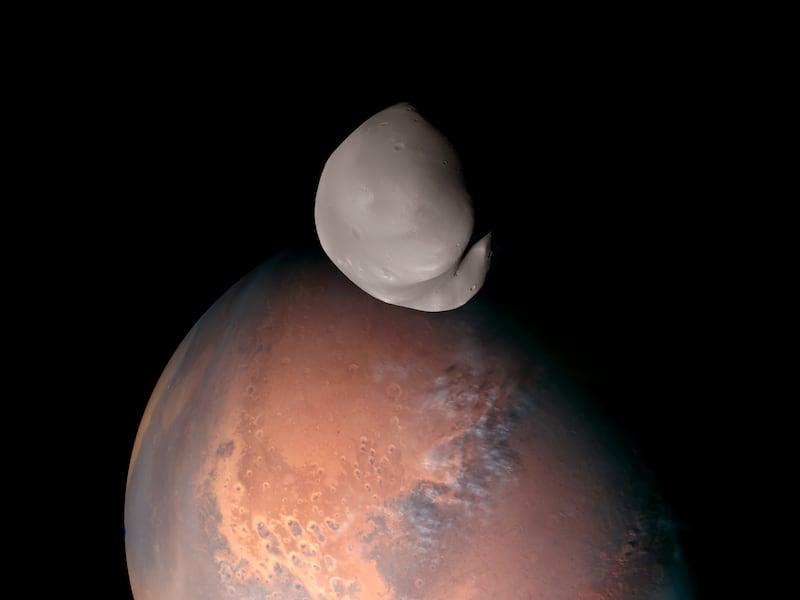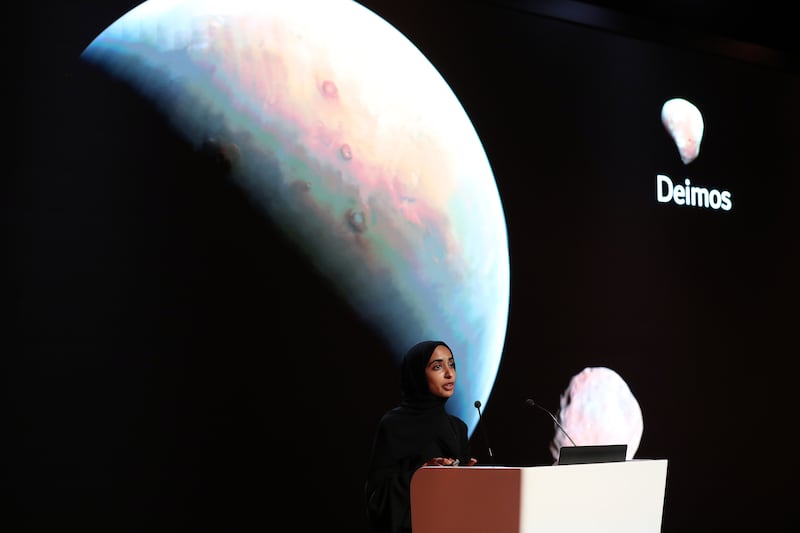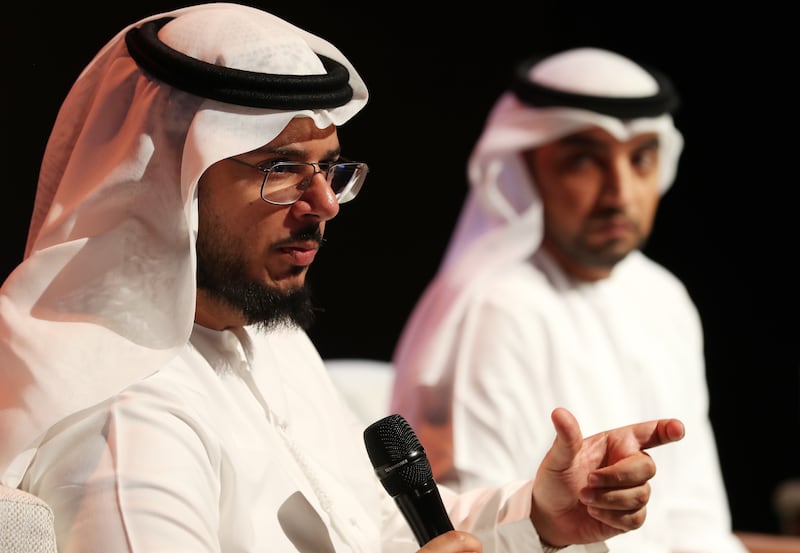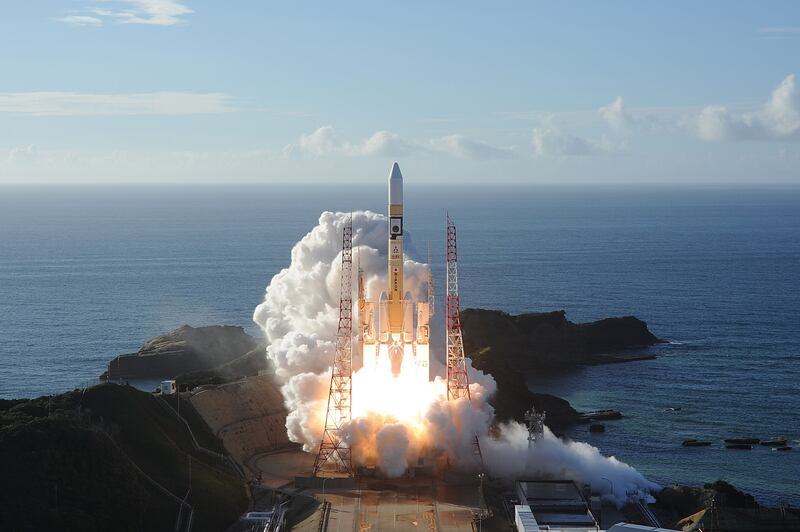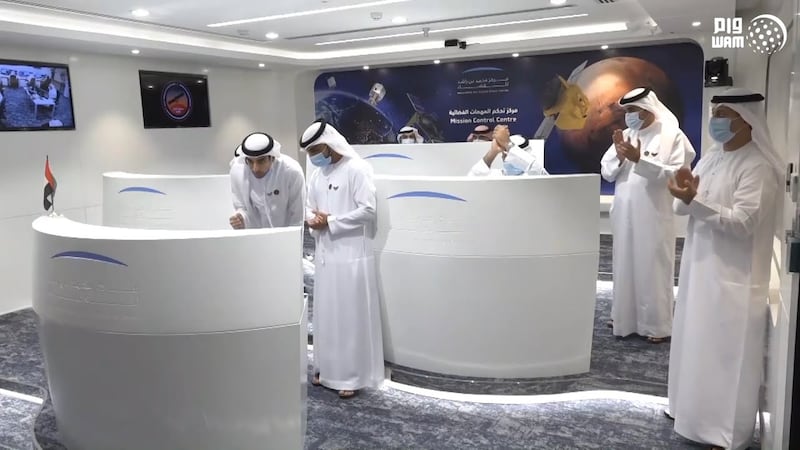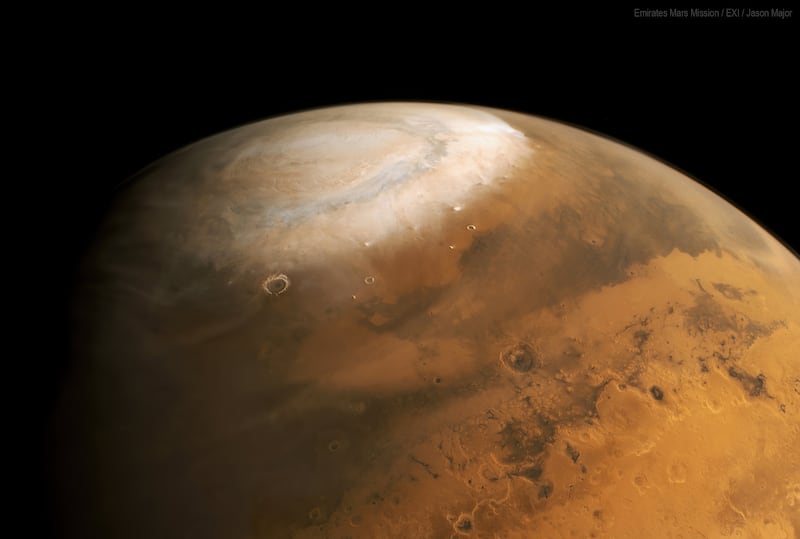The UAE will on Friday mark three years since its Hope probe reached Mars, the moment when the Emirates become the first Arab nation to place a craft in the Red Planet's orbit and only the fifth worldwide.
Hope, a craft the size of a small car, entered orbit on February 9, 2021, and has since been capturing data on the planet's atmosphere and on one of its moons, Deimos.
The observations have helped scientists all over the world to enhance their understanding of Mars, including how the planet, which is believed to have been habitable a long time ago, lost its atmosphere and can no longer support life.
Dr Dimitra Atri, a planetary scientist at the New York University Abu Dhabi, is one of the scientists who is using Hope's data, partly to create a global map of the planet.
"The remarkable camera of the EXI instrument, combined with the expansive coverage provided by the Hope probe, enabled us to create a stunning global mosaic and photographic atlas of Mars," he told The National.
"The enthusiasm displayed by both Emirati and international students for this research has been nothing short of inspiring.
"Their contributions working on Hope data have significantly enriched our understanding of Mars and raised new questions for researchers around the globe."
Landmark observations
Dr Atri's mapping efforts have been integrated into the Mars24 software, which was developed by Nasa's Goddard Institute of Space Studies, and JMars, essential tools used by Mars researchers.
Hope offered unprecedented global coverage of the planet's atmosphere, revealing the intricacies of daily and seasonal weather cycles.
This was possible thanks to the unique orbit in which the craft was placed, allowing it to "see" the planet from a much higher vantage point than previous Mars missions.
One of the key findings was the observation of elusive auroras, known as the discrete aurora.
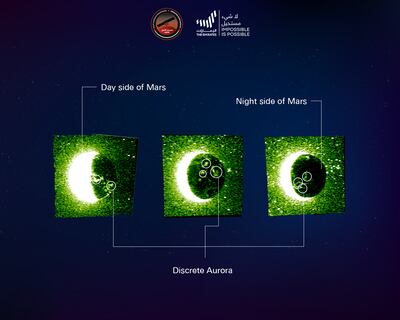
These are unique phenomenon in the Martian atmosphere, which help to provide insight into the interactions between solar particles and the planet's magnetic fields.
"It helped in shedding light on the mechanisms potentially responsible for the erosion of its atmosphere," Dr Atri said.
"This erosion led to the transformation of Mars from a once Earth-like planet to the cold, arid desert landscape we observe today."
Hope tracked a massive dust storm on Mars for more than two weeks, monitoring how quickly they can sweep across the planet.
It followed a rapidly evolving regional dust storm in December 2021, as it expanded to a width of several thousand kilometres.
Scientists hope by studying such weather patterns they can gain deeper insight into how they are drying out the planet by helping Martian water escape the planet's atmosphere.
Viral image of Deimos
In February 2023, the UAE Space Agency decided to move the Hope probe to a new orbit around Mars to study one of the planet’s tiny moons.
Deimos, with a radius of only 6.2km, is the smaller of the two moons that orbit the Red Planet.
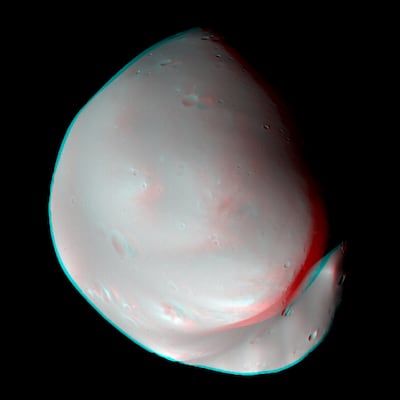
The agency released a striking image of the moon in April, offering invaluable data on its orbit, surface features and composition.
Billionaire Elon Musk congratulated the UAE on his platform X, formerly Twitter, on the findings after an influencer shared a story by The National.
Future of Hope probe and lasting legacy
It was announced in February 2023 that the country's Mars mission would be extended by one more year.
But the agency could decide to keep the mission going, depending on operational budgets and the health of the spacecraft.
Even if the mission ends, the Hope probe has played a significant role in helping to shape the country's space programme.
The public-private partnership model that was used during the mission will be used to help develop the nation's next big project – a mission to the main asteroid belt between Mars and Jupiter.
Many universities across the country are now offering space-focused programmes.
